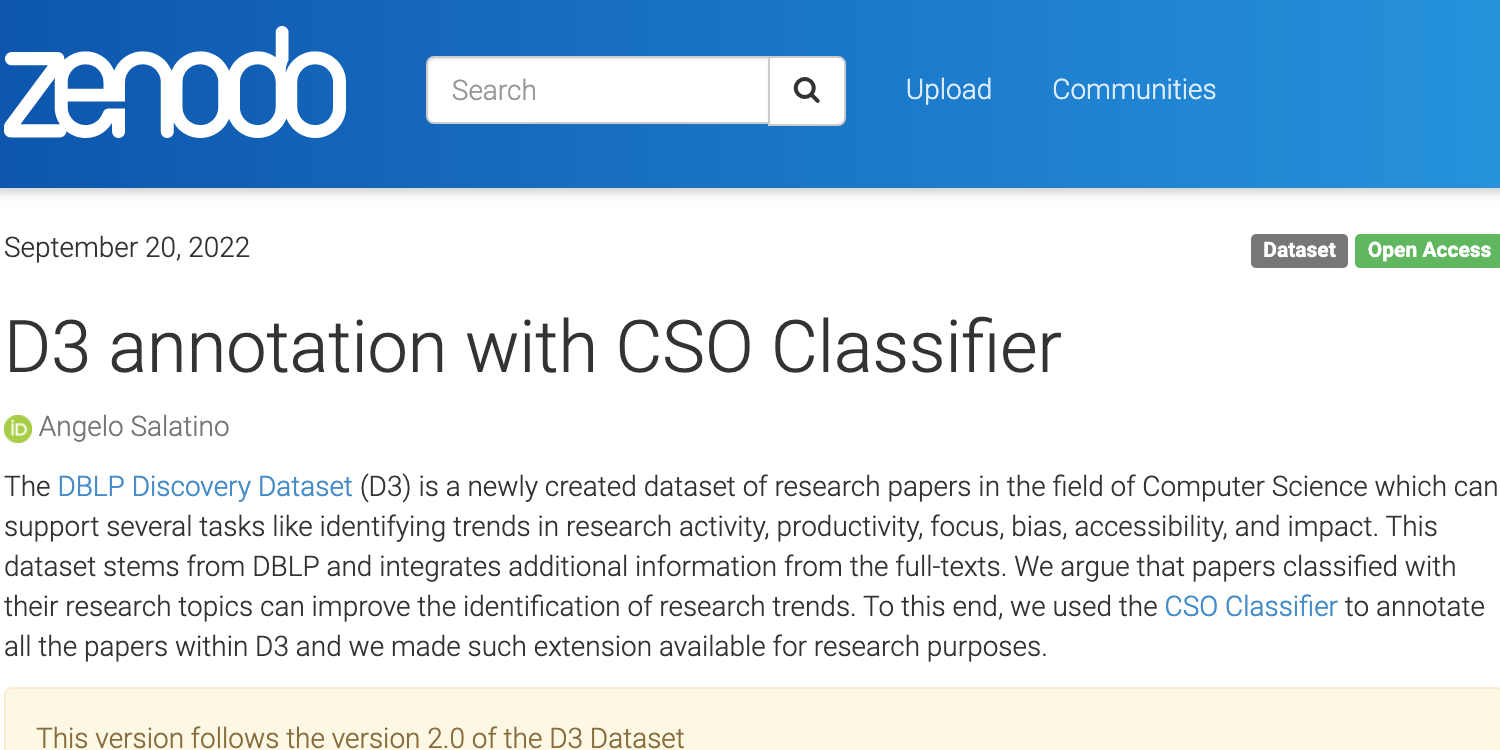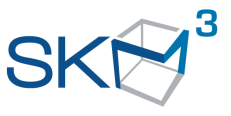Abstract The DBLP Discovery Dataset (D3) is a newly created dataset of research papers in the field of Computer Science which can support several tasks like identifying trends in research activity, productivity, focus, bias, accessibility, and impact. This dataset stems from DBLP and integrates additional information from the full-texts. We argue that papers classified with […]
Category: Trend Analysis

Assessing Scientific Conferences through Knowledge Graphs
“Assessing Scientific Conferences through Knowledge Graphs” is a paper published at the Industry Track of the 2021 International Semantic Web Conference. Simone Angioni1, Angelo Antonio Salatino2, Francesco Osborne2, Aliaksandr Birukou3, Diego Reforgiato Recupero1, Enrico Motta2 1 Department of Mathematics and Computer Science, University of Cagliari (Italy) 2 Knowledge Media Institute, The Open University, Milton Keynes (UK) […]
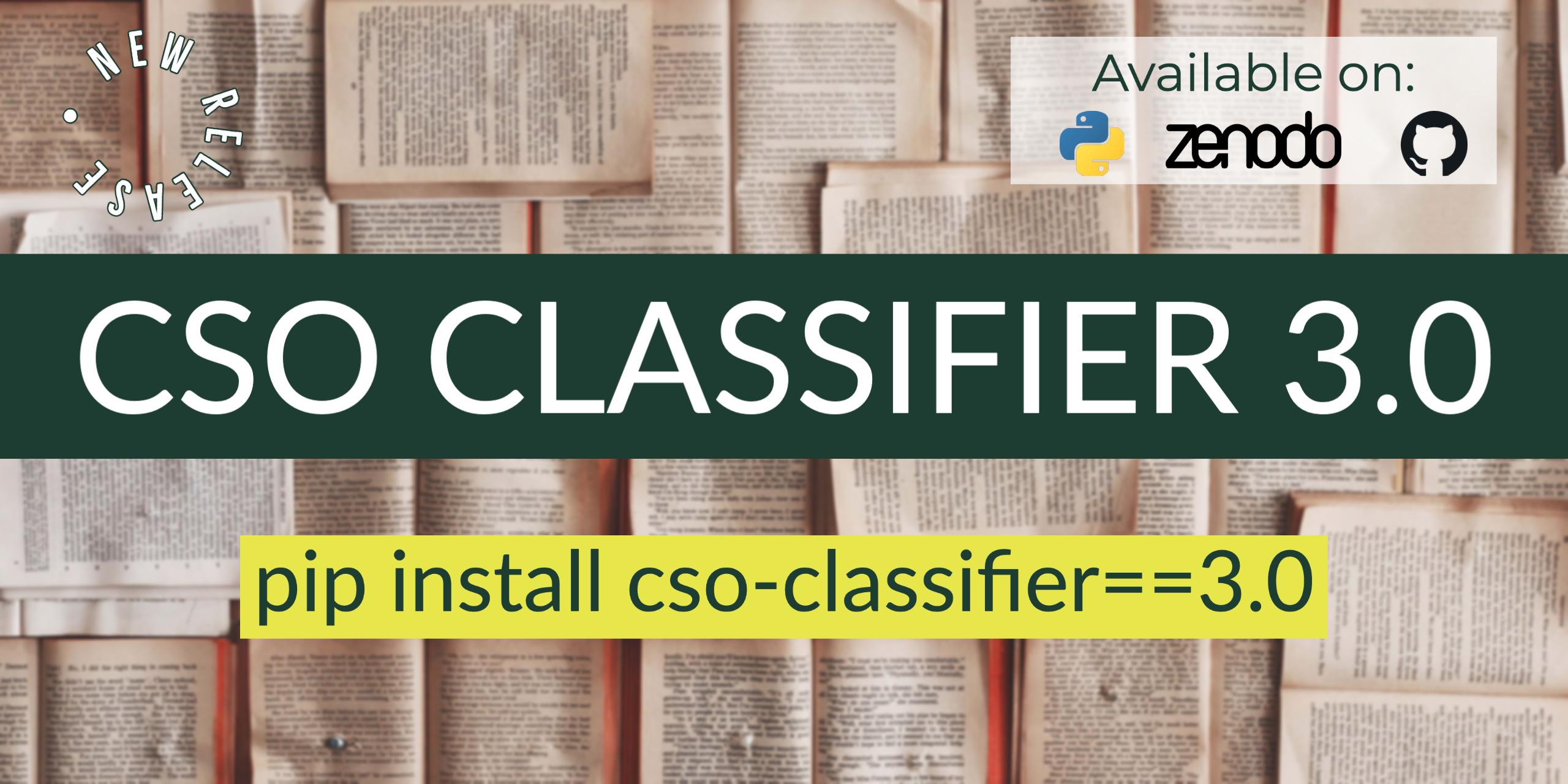
CSO Classifier 3.0
Abstract Classifying research papers according to their research topics is an important task to improve their retrievability, assist the creation of smart analytics, and support a variety of approaches for analysing and making sense of the research environment. In this repository, we present the CSO Classifier, a new unsupervised approach for automatically classifying research papers […]
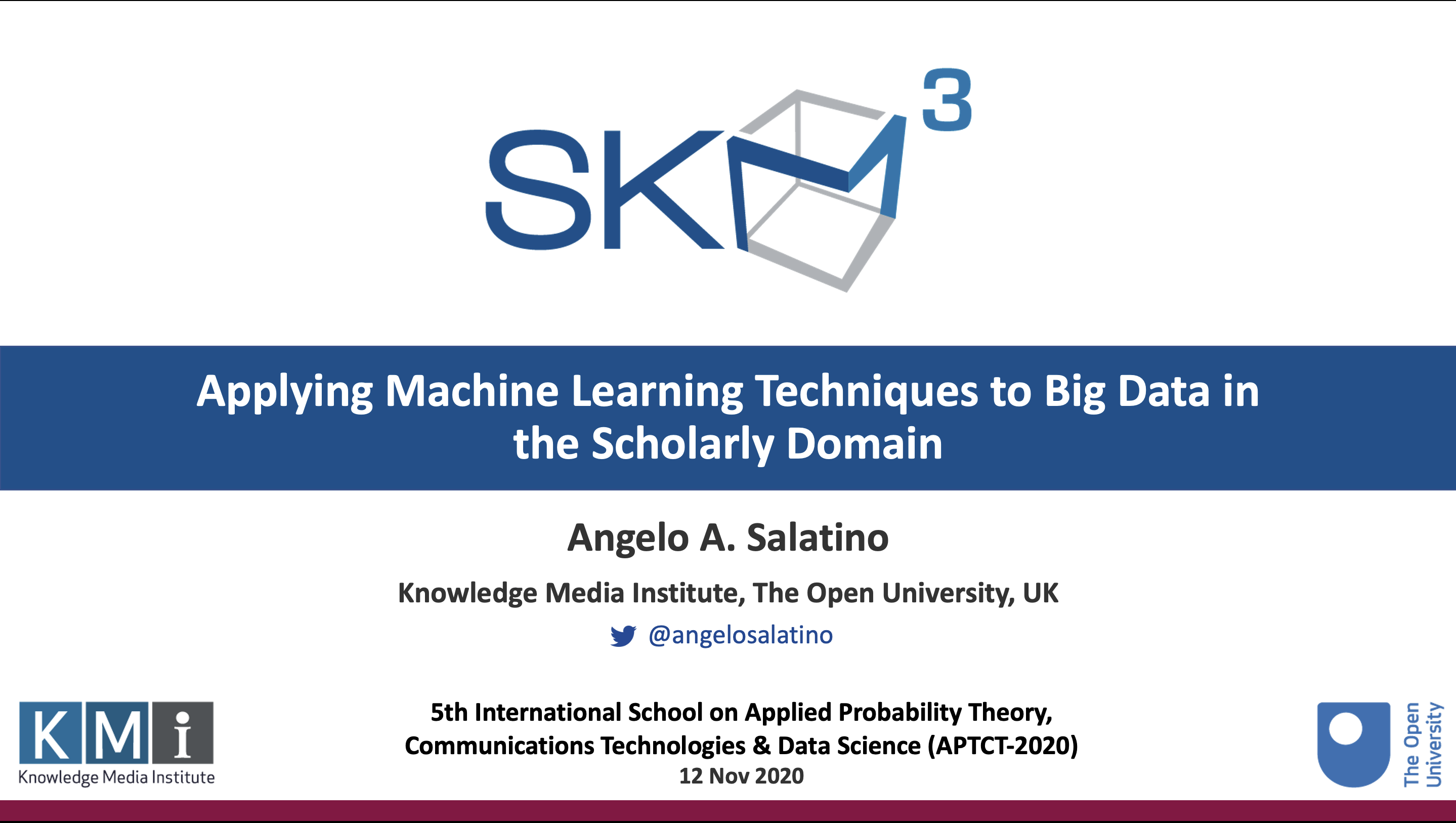
Applying Machine Learning Techniques to Big Data in the Scholarly Domain
Ontologies of research areas have been proven to be useful in many application for analysing and making sense of scholarly data. In this lecture, I will present how we produced the Computer Science Ontology (CSO), which is the largest ontology of research areas in the field of Computer Science, and discuss a number of applications that build on CSO, to support high-level tasks, such as topic classification, research trends forecasting, metadata extraction, and recommendation of books.
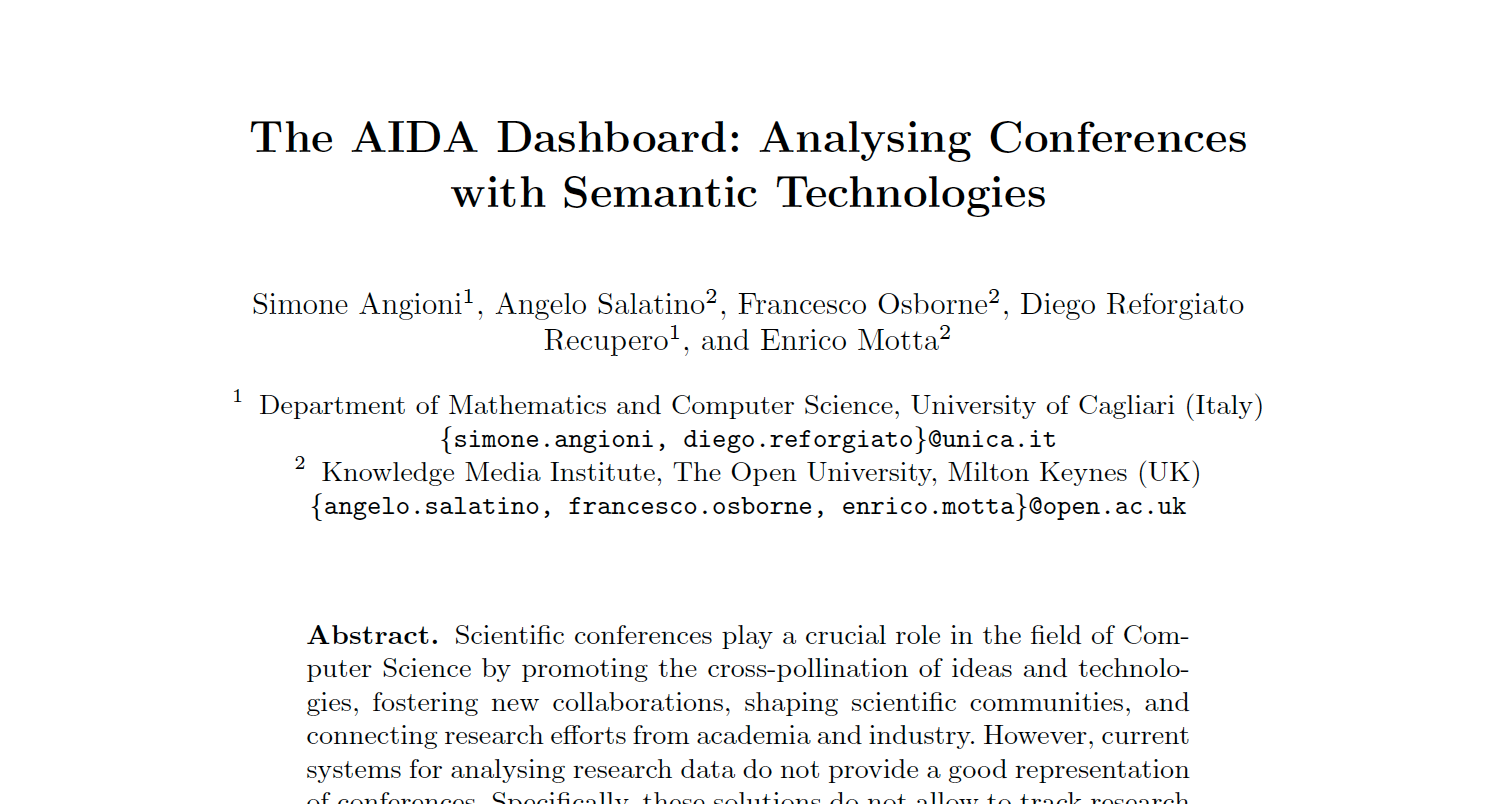
The AIDA Dashboard: Analysing Conferences with Semantic Technologies
“The AIDA Dashboard: Analysing Conferences with Semantic Technologies” is a demo paper submitted to the Posters and Demos tracks of the 19th International Semantic Web Conference. Simone Angioni1, Francesco Osborne2, Angelo A. Salatino2, Diego Reforgiato Recupero1, Enrico Motta2 1 University of Cagliari, Via Università 40, 09124 Cagliari 2 Knowledge Media Institute, The Open University, […]
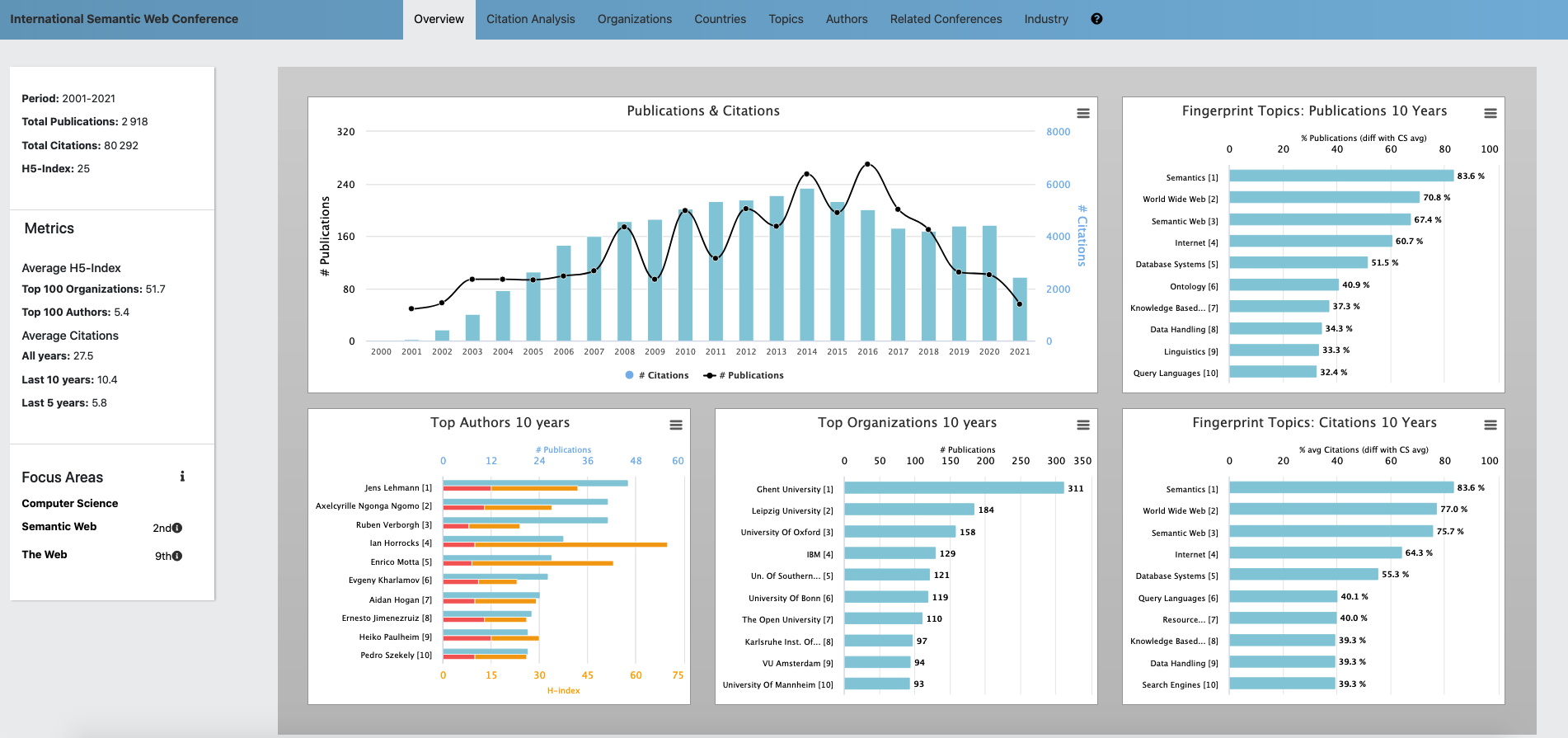
AIDA Dashboard
The AIDA Dashboard is a web application that allows users to visualize several kind of analytics about a specific conference (see Figure 1). The backend is developed in Python, while the frontend is in HTML5 and Javascript. The AIDA Dashboard builds on the Academia/Industry DynAmics knowledge graph (AIDA), a large knowledge base describing 14M articles […]
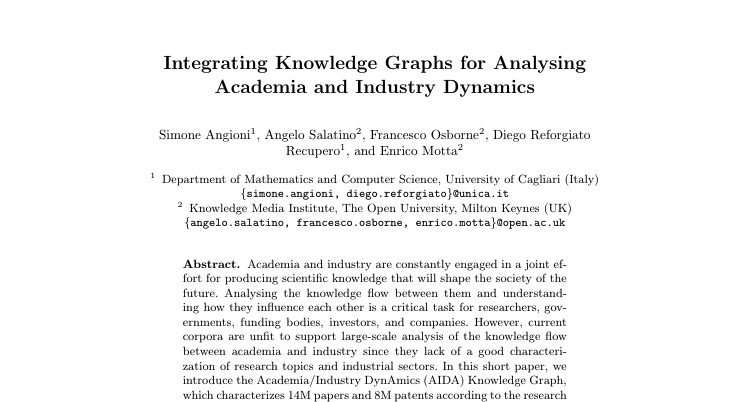
Integrating Knowledge Graphs for Analysing Academia and Industry Dynamics
Academia and industry are constantly engaged in a joint effort for producing scientific knowledge that will shape the society of the future. Analysing the knowledge flow between them and understanding how they influence each other is a critical task for researchers, governments, funding bodies, investors, and companies. However, current corpora are unfit to support large-scale analysis of the knowledge flow between academia and industry since they lack of a good characterization of research topics and industrial sectors. In this short paper, we introduce the Academia/Industry DynAmics (AIDA) Knowledge Graph, which characterizes 14M papers and 8M patents according to the research topics drawn from the Computer Science Ontology. 4M papers and 5M patents are also classified according to the type of the author’s affiliations (academy, industry, or collaborative) and 66 industrial sectors (e.g., automotive, financial, energy, electronics) obtained from DBpedia. AIDA was generated by an automatic pipeline that integrates several knowledge graphs and bibliographic corpora, including Microsoft Academic Graph, Dimensions, English DBpedia, the Computer Science Ontology, and the Global Research Identifier Database.

Academia/Industry DynAmics (AIDA) Knowledge Graph
Academia and industry share a complex, multifaceted, and symbiotic relationship. Analysing the knowledge flow between them, understanding which directions have the biggest potential, and discovering the best strategies to harmonise their efforts is a critical task for several stakeholders. While research publications and patents are an ideal media to analyse this space, current datasets of […]
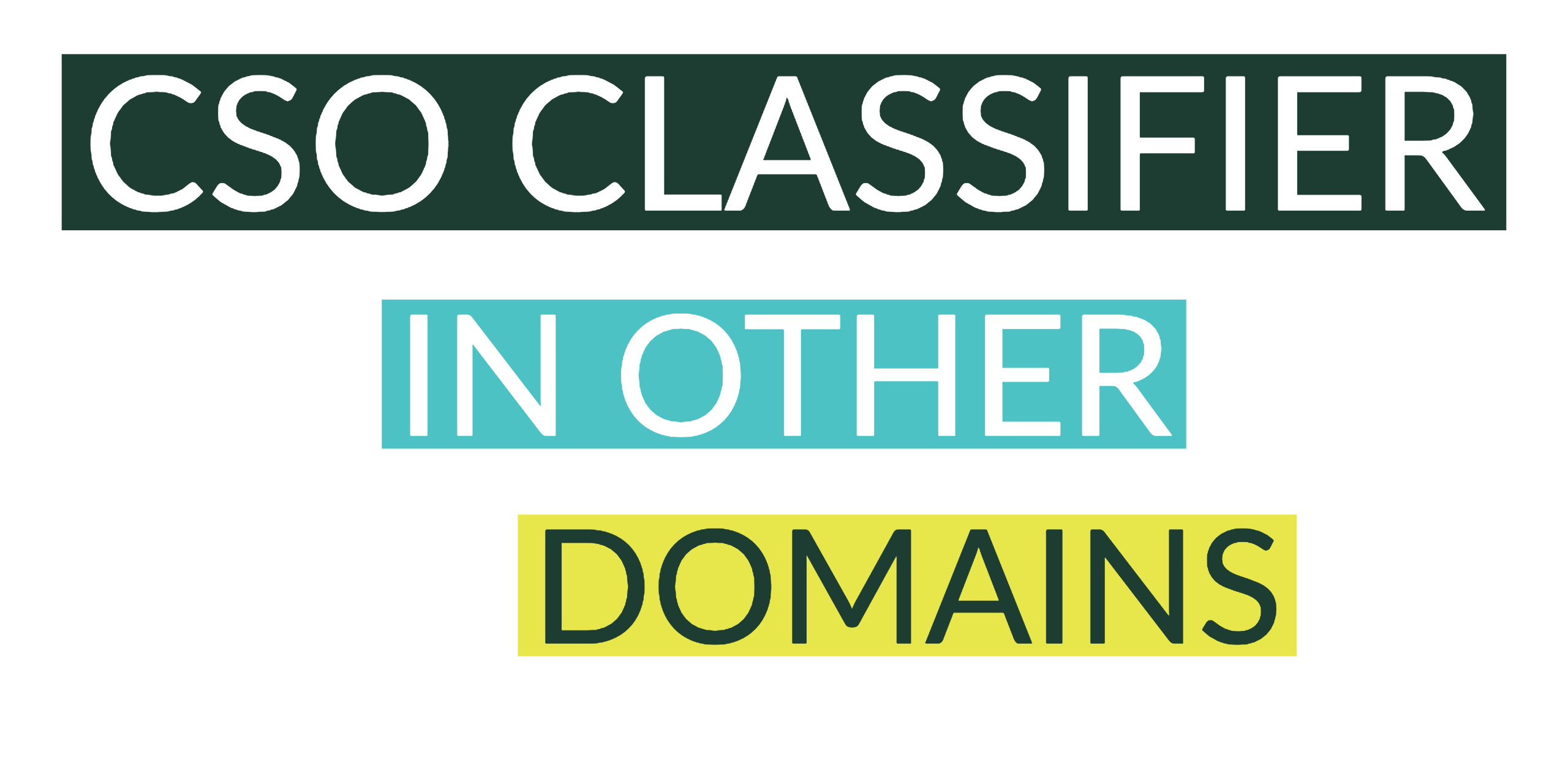
How to use the CSO Classifier in other domains
Being able to characterise research papers according to their topics enables a multitude of high-level applications such as i) categorise proceedings in digital libraries, ii) semantically enhance the metadata of scientific publications, iii) generate recommendations, iv) produce smart analytics, v) detect research trends, and others.
In our recent work, we designed and developed an unsupervised approach to automatically classify research papers according to an ontology of research areas in the field of Computer Science. This approach uses well-known technologies from the field of Natural Language Processing which makes it easily generalisable. In this article, we will show how we can customise the CSO Classifier and apply it to other fields of Science.
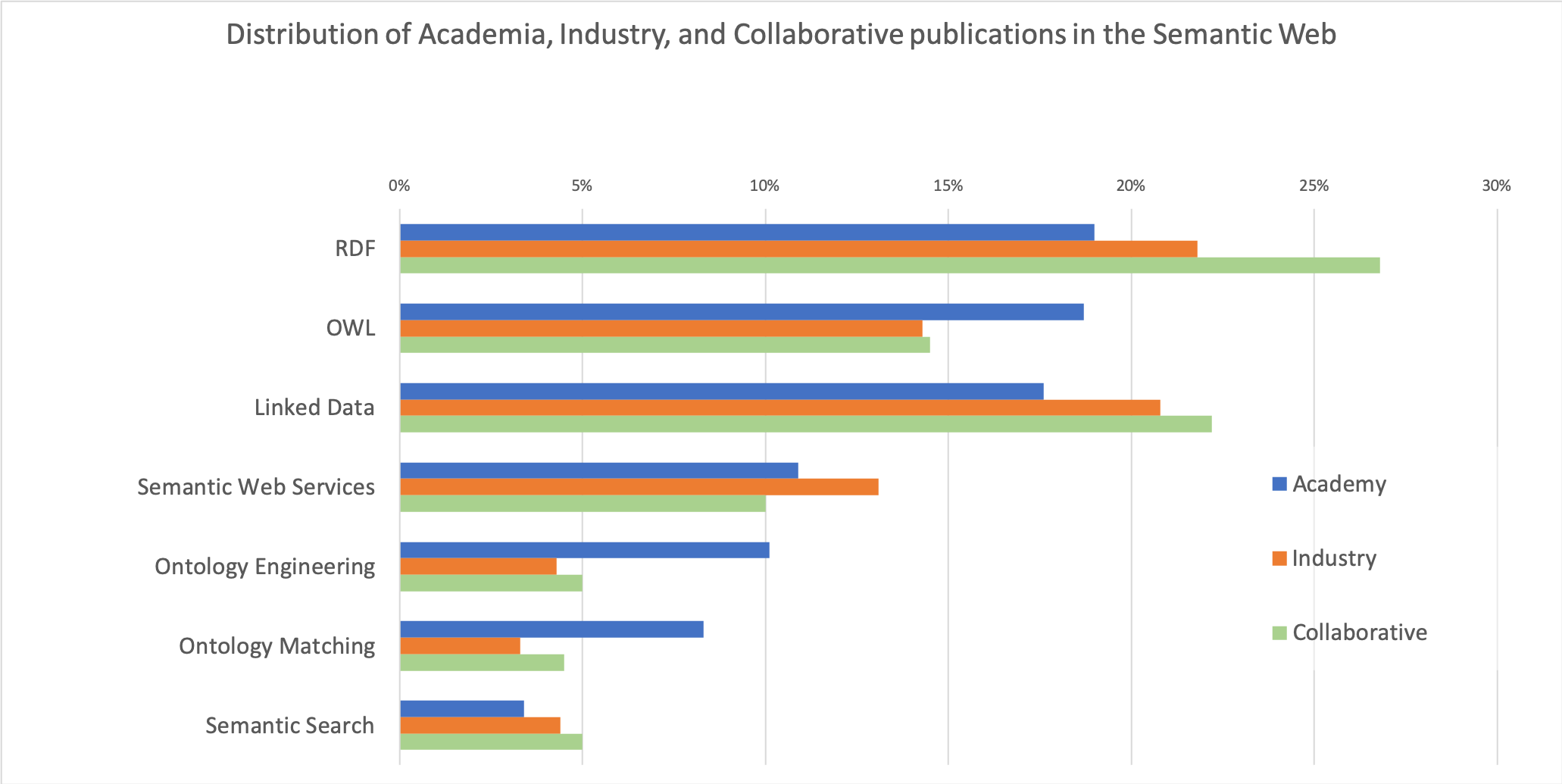
Integrating Knowledge Graphs for Comparing the Scientific Output of Academia and Industry
Analysing the relationship between academia and industry allows us to understand how the knowledge produced by the universities is being adopted and enriched by the industrial sector, and ultimately affects society through the release of relevant products and services. In this paper, we present a preliminary approach to assess and compare the research outputs of academia and industry. This solution integrates data from several knowledge graphs describing scientific articles (Microsoft Academics Graph), research topics (Computer Science Ontology), organizations (Global Research Identifier Database), and types of industry (DBpedia). We focus on the Semantic Web as exemplary field and report several insights regarding the different behaviours of academia and industry, and the types of industries most active in this field.
